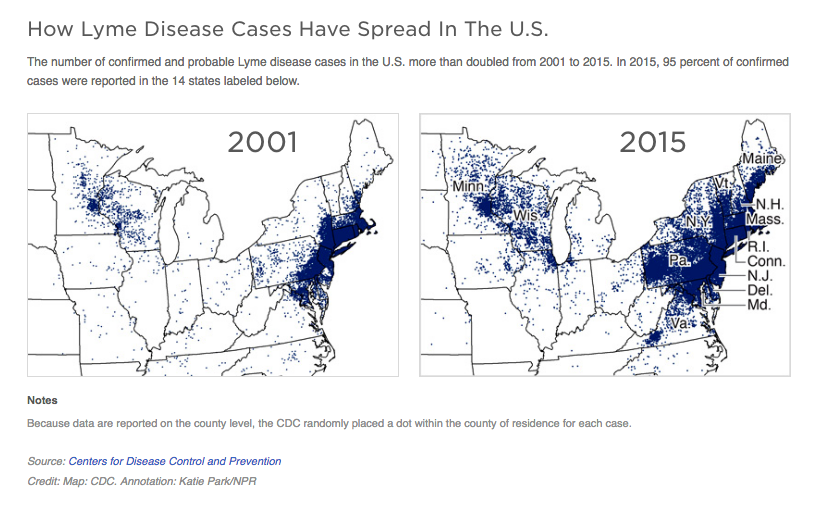May 7, 2018
Lyme Disease On The Rise, Could Affect Outdoor Workers

May 7, 2018

Since 2001, reported cases of Lyme Disease has increased significantly.
Carried by ticks in wooded areas or fields with long grass, Lyme Disease is caused by bacterium called Borrelia burgdorferi that is transferred to humans when bitten.
The bacterium is specifically carried by infected blacklegged ticks, also referred to as deer ticks. Lyme Disease can cause extreme fatigue, fever, headache, and a distinct skin rash called erythema migrans that resembles a “bullseye”.
Lyme Disease is treatable with a few weeks of antibiotics, but if left untreated, can spread to the joint, nervous system, and heart. Because symptoms aren’t always noticeable, it’s important that if you receive a tick bite, you seek medical treatment in case the tick was infected.
CDC’s Lyle Peterson told reporters that tick-borne disease such as Lyme Disease has been “steadily going up every year … as the diseases expand to new areas around the country.” The CDC also mentions that the actual amount of people infected is likely 10 times higher than actual reported cases.

Those who spend a lot of time outside in tick habitats, such as forestry workers, farmers, landscapers, etc. are at greater risk for being bitten by an infected tick.
The Lyme Disease Association states that tick habitats include:
*under plants/leaves to prevent dehydration
The best way to prevent ticks are by doing a thorough tick inspection on your body after leaving a tick habitat. This includes checking your armpits and behind your ears; common locations for ticks to camp out.
Barbara Thorne, entomologist at the University of Maryland, suggests wearing light colored clothing to be able to spot the often pin-sized, dark brown ticks. Long sleeves and pants are also suggested.
She mentions “the ticks do tend to climb upward — like they climb up your legs. They often attach where there was a constriction of clothing, like around the waistline.”
Bug spray and tick repellent may also help ward away ticks, but Thorne mentions that your best bet is a good old fashioned tick check.
If you should get a tick on you, don’t panic. The CDC does stress that ticks need to be attached for 36 to 48 hours before they can transmit the bacteria that cause Lyme disease.
But, you should seek to remove the tick immediately by grabbing the tick as close to the surface of the skin as possible, and by tugging upward with steady pressure.